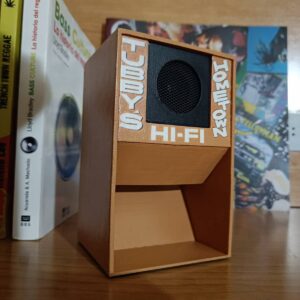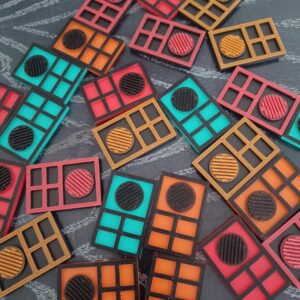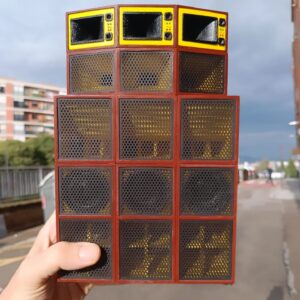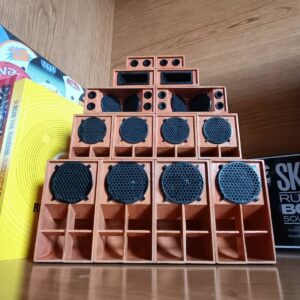Delving into the annals of reggae history, one name resonates profoundly: Youth Promotion Sound System. Founded by the legendary Sugar Minott, this sound system wasn’t merely an entertainment medium; it was a revolutionary platform that redefined the Jamaican music landscape. While many are familiar with its celebrated legacy, there are facets of Youth Promotion that remain shrouded in mystery. This article unveils the lesser-known aspects that made Youth Promotion exceptionally unique.
A Sanctuary for Emerging Talent
In the vibrant yet challenging streets of Kingston, opportunities for young artists were scarce. Recognizing this, Sugar Minott founded Youth Promotion, not just as a sound system but as a movement to uplift and mentor the next generation of reggae and dancehall artists. Unlike other sound systems of the era, Youth Promotion wasn’t just about entertainment—it was about creating opportunities for those who had the talent but lacked the resources or connections to break into the industry.
A prime example of this is Tenor Saw, whose real name was Clive Bright. At just 19 years old, he joined Youth Promotion, where Minott recognized his raw talent and gave him a platform to develop his unique vocal style. It was through Youth Promotion that Tenor Saw recorded his iconic hit “Ring the Alarm” (1985), which became one of the most recognizable soundclash anthems of all time. The song’s success propelled Tenor Saw to stardom and cemented Youth Promotion’s reputation as a breeding ground for talent. Without Minott’s mentorship and his insistence on giving young artists a chance, Tenor Saw might never have reached his full potential.
Another artist who benefited from Youth Promotion’s support was Garnett Silk, originally known as “Bimbo.” Alongside Tony Rebel, Silk was a rising talent in Destiny International sound system but struggled to gain broader recognition. Around 1986, he and Rebel moved to Kingston and started performing with Youth Promotion, where they gained exposure and honed their craft. These performances helped launch their careers, allowing them to become household names in the reggae scene.
Youth Promotion wasn’t just about putting artists in front of an audience—it was about mentorship and empowerment. Sugar Minott’s home in Kingston became a safe haven for aspiring artists, many of whom were struggling to make ends meet. His house was not just a residence but a creative hub where young talent could stay, write music, and learn the ins and outs of the industry. This hands-on approach set Youth Promotion apart from other sound systems that focused solely on competition and performance.

Innovative Musical Synergy
In the mid-1980s, Youth Promotion Sound System emerged as a trailblazer in the Jamaican music scene, renowned for its innovative fusion of live performances and recorded tracks. This approach not only captivated audiences but also provided a dynamic platform for artists to showcase their versatility.
A quintessential example of this synergy is the 1985 performance featuring Nitty Gritty, Tenor Saw, and Sugar Minott. In this session, the artists seamlessly blended live vocals with pre-recorded rhythms, creating an electrifying atmosphere that resonated with the crowd. This method allowed for spontaneous creativity, enabling performers to interact with the audience in real-time while maintaining the cohesive sound of studio recordings. Such performances were instrumental in setting new trends within the reggae and dancehall genres, influencing countless artists and sound systems that followed.
Moreover, Youth Promotion’s commitment to innovation extended beyond performance techniques. The sound system served as a training ground for emerging talents, offering them the opportunity to experiment with different styles and sounds. This nurturing environment led to the development of unique musical blends, as artists were encouraged to push the boundaries of traditional reggae music. The emphasis on creativity and experimentation not only enriched the Jamaican music landscape but also solidified Youth Promotion’s legacy as a cornerstone of musical innovation.
A Legacy of Cultural Resilience
Beyond its musical contributions, Youth Promotion Sound System stood as a beacon of cultural resilience and social activism in Jamaica. During a period marked by political unrest and social disparities, the sound system transcended entertainment, becoming a unifying force that addressed pressing societal issues through the powerful medium of music.
Founded by Sugar Minott, Youth Promotion was more than just a platform for emerging artists; it was a community hub deeply embedded in the heart of Kingston. Minott transformed his residence into a vibrant social center, offering a safe space for young talents to gather, collaborate, and find solace from the challenges of ghetto life. This environment fostered a sense of belonging and purpose, steering many away from the perils of street life and towards artistic expression.
The events organized by Youth Promotion were not merely musical gatherings but communal assemblies where music served as a conduit for social commentary and change. These sessions provided a platform to discuss and confront issues such as poverty, violence, and systemic injustice. By integrating conscious lyrics with compelling rhythms, Youth Promotion educated and empowered attendees, fostering a collective consciousness aimed at societal transformation.
The legacy of Youth Promotion’s cultural activism continues to influence contemporary artists and sound systems worldwide. Its unique blend of musical innovation and community engagement has inspired a global movement that recognizes the sound system as a tool for social change. Modern sound systems and artists draw from Youth Promotion’s model, utilizing music to unite communities and address current social issues, thereby perpetuating the enduring impact of Minott’s vision.
The impact of Youth Promotion Sound System extends far beyond its golden years—it set a precedent for reggae culture, shaping the way music was created, performed, and shared. Its influence is still felt today, and for those who appreciate the power of sound system culture, owning a piece of this history is now possible.
Explore the Inspired Youth Promotion Mini Sound System – A Tribute to Reggae’s Greatest Legacy!
👉 Check it out here





